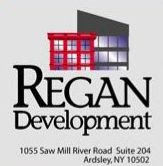Seven Trends Shaping Student Housing
- New financing schemes address rapid growth
- Mixed-use energizes neighborhood vitality
- Common areas must serve multiple purposes
- Sustainability becomes a teaching tool
- Prefab bathrooms show up on the radar
- 'Greek villages' make a comeback
- Residential college system gains more adherents.
Today's college students wouldn't think of sharing a bathroom with a whole floor of cohorts. They expect flat panel TV's, cable, and high-speed Internet access everywhere-for both academic and social reasons-along with comfortable nooks and crannies in which to gather and study. These amenities may seem excessive to their bill-paying parents, but university officials say they're competing fiercly for top student talent, so they're giving customers what they want.
Building teams invested in programming, designing, and constructing collegiate residential facilities would do well to consider several trends that are influencing activities in this sector:
- Alternative financing
- Mixed use/urban refill
- Innovative flexible common spaces
- Sustainability as a lifetime learning tool
New university housing feeds students' environmental awareness and makes it easier for them to follow through with good ecological practices. Smart Building Teams can be equally motivated to use their skills and experience toward creating efficient, affordable residence facilities for today's university scholars.





